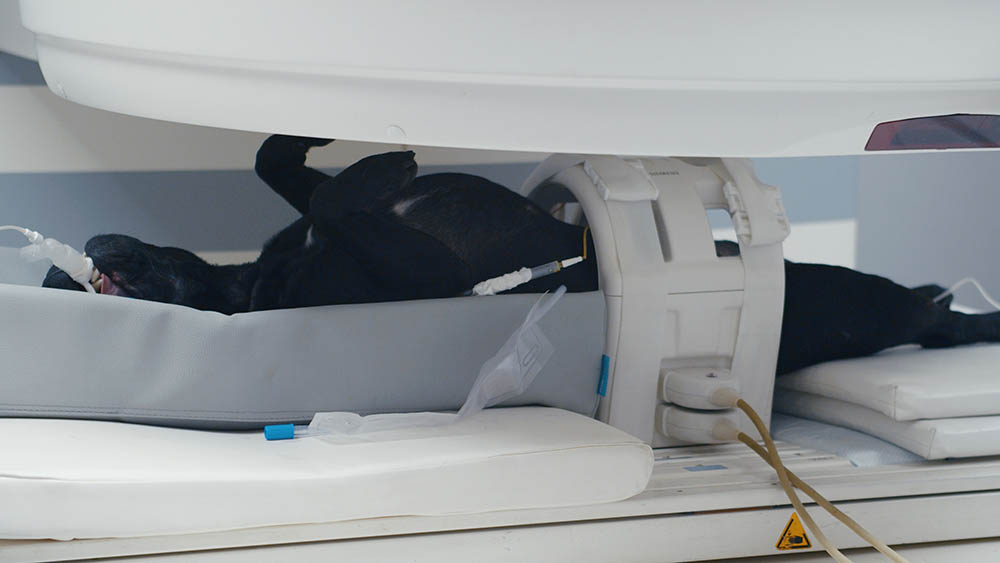Click to Skip Ahead
A number of fungal infections can affect our canine companions. Some of these fungal infections are superficial or “local” diseases, such as ringworm and yeast dermatitis, which are problematic but not life-threatening. Other fungal infections, such as Aspergillosis and Cryptococcosis, can involve multiple internal organs and are much more serious.
This article will explore common fungal infections in dogs—what they are and watch to watch for, as well as how they come about and how they can be treated.
What Are Fungal Infections in Dogs?
Fungi are parasitic microorganisms that produce spores. While many people think of mushrooms when they think of fungi, the fungi that produce disease in dogs are generally tiny “microorganisms” that require a microscope to be seen. Fungi are abundant in the environment (particularly in soil), but only a few are capable of causing disease. This article will focus on four common causes of fungal infections in dogs. It helps to categorize fungal infections as “localized”, meaning the fungi are confined to the skin or external features, and “systemic”, meaning major body systems are involved:
 The 2 Types of Fungal Infections
The 2 Types of Fungal Infections
1. Localized Fungal Infections
Dermatophytosis (Ringworm). Ringworm is an extremely contagious disease-causing fungus that is common across the world. It is spread through direct contact between dogs, though it can also “jump across” species from people or cats. Ringworm causes skin disease and hair loss that is generally mild and treatable.
Fungal Dermatitis. This is also referred to as “yeast dermatitis” or, in vet circles, “Malassezia dermatitis”. Yeasts are a type of fungus, and in dogs, Malassezia pachydermatis is the yeast normally responsible for this disease. While it is normal for dogs to have this yeast on their skin, some dogs are prone to an overgrowth of the yeast, resulting in inflammation of the skin.

2. Systemic Fungal Infections
Aspergillosis. This is a variety of fungi found in soils across the world. It commonly infects the nasal passages of dogs, and this is termed “Nasal Aspergillosis.” While generally limited to the nose and the sinuses, it can damage the bones of the nasal cavity. Less commonly, this fungus causes a more generalized and life-threatening disease, called “Disseminated Aspergillosis”, in which the fungus enters the bloodstream. This tends to be seen in German Shepherd dogs.
Cryptococcus fungus. While this is more prevalent in cats, dogs can also become infected with the Cryptococcus fungus. It can cause lung infections if inhaled, but it can also reach the eyes, skin, and nervous system. Cryptococcosis is more common in areas where birds such as pigeons gather in large numbers.
The Signs of Fungal Infections Based on the Fungus Type
The signs of fungal infections in dogs depend on which fungus is involved, and if the disease is localized or systemic.
- Ringworm: Ringworm is generally not an itchy condition in dogs. It causes patches of hair loss, circular skin lesions, flaky skin, and brittle nails.
- Fungal Dermatitis: This is generally confined to the skin, ears, and paws. Red/inflamed skin, itchy skin, scabby lesions, yeasty-smelling skin, and ear infections are all common signs.
- Aspergillosis: Nasal Aspergillosis—This causes lethargy, bloody or snotty nasal discharge, sneezing, pain around the nose, and loss of pigment around the nose.
- Disseminated Aspergillosis—Lethargy, limping, loss of appetite, weakness, vomiting, and swollen lymph nodes.
- Cryptococcosis: Lethargy, coughing, labored breathing, eye problems, and seizures are all possible signs.

What Are the Causes of Fungal Infections in Dogs?
Fungi are everywhere in the environment. There are three main ways dogs become infected with a fungus.
Firstly, the fungus can be inhaled or picked up in the environment, as in the case of Aspergillus and Cryptococcus. This is generally considered an “accident” and can occur in otherwise healthy dogs.
Secondly, fungal infections can be transmitted from one dog to another. This is what happens with contagious fungal infections such as ringworm. Other dogs infected by ringworm are “immunocompromised”, meaning they have a weakened immune system. This occurs with sick dogs and young puppies.
Lastly, fungal infections can be caused by an overgrowth of fungi that naturally exist in small numbers on the skin; this is the case with yeast dermatitis. Most dogs have a few Malassezia yeast on their skin, causing no issues at all; but some dogs with allergies develop unhealthy, inflamed skin, allowing the yeast population to flourish and cause dermatitis.
How Do I Care for a Dog with a Fungal Infection?
This should always begin with a consultation with a veterinarian, so that a diagnosis can be reached, and treatment options discussed. Treatment for dogs with fungal infections varies based on what fungus is present, and how severe the signs are. Generally, localized fungal infections are treated with topical creams and shampoos, and sometimes tablets. Dogs infected with ringworm should be kept away from other dogs to minimize the chance of the fungus spreading.
Systemic fungal infections require more aggressive treatment, often involving a period of hospitalization and very long courses of antifungal tablets. Some dogs with Nasal Aspergillosis benefit from a surgical procedure under anesthetic.

Frequently Asked Questions
What Is the Prognosis for Dogs with Fungal Infections?
This depends on the specific fungal infection. Localized fungal infections are generally treatable, with a very good prognosis for full recovery, but systemic fungal infections can be much harder to treat.
How Are Fungal Infections in Dogs Diagnosed
Most localized fungal infections, which are confined to the skin, can be diagnosed by fairly simple and non-invasive tests. This might include taking skin samples for analysis under the microscope, as well as fungal cultures and biopsy. Systemic fungal infections may also require fungal cultures and biopsy; however, advanced imaging such as an MRI or CT scan may be required to establish a diagnosis.

Conclusion
Fungal infections in dogs can cause a wide variety of signs. While systemic fungal infections are very hard to prevent and treat, localized fungal infections can generally be managed with good skin hygiene, isolation from other dogs, and fairly simple at-home treatments.
The above list is not exhaustive but rather focuses on the most common fungal infections in dogs. If you have any concerns about your dog, or if you have noticed any of the signs outlined above, don’t hesitate to contact your veterinarian.
Featured Image Credit: Nathalie Marran, Shutterstock




 The 2 Types of Fungal Infections
The 2 Types of Fungal Infections






